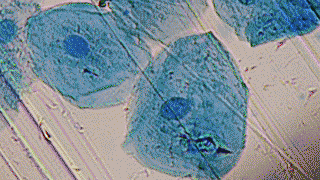Ricardocedillob - Sin Título
More Posts from Ricardocedillob and Others


Hundreds Of Eggs From Ancient Flying Reptile Are Found In China
A cache of hundreds of eggs discovered in China sheds new light on the development and nesting behavior of prehistoric, winged reptiles called pterosaurs.
Pterosaurs were fearsome-looking creatures that flew during the Lower Cretaceous period alongside dinosaurs. This particular species was believed to have a massive wingspan of up to 13 feet, and likely ate fish with their large teeth-filled jaws.
Researchers working in the Turpan-Hami Basin in northwestern China collected the eggs over a 10-year span from 2006 to 2016.
A single sandstone block held at least 215 well-preserved eggs that have mostly kept their shape. Sixteen of those eggs have embryonic remains of the pterosaur species Hamipterus tianshanensis, the researchers said in findings released today in Science.
The fossils in the area are so plentiful that scientists refer to it as “Pterosaur Eden,” says Shunxing Jiang, a paleontologist at the Chinese Academy of Science’s Institute of Vertebrate Paleontology and Paleoanthropology. “You can very easily find the pterosaur bones,” he says, adding that they believe dozens more eggs might still lie hidden within the sandstone.
Artist’s rendition of a family of pterosaurs, which had massive wingspans of up to 13 feet and likely ate fish with their large teeth-filled jaws. Illustrated by Zhao Chuang
Hundreds of pterosaur bones from the Lower Cretaceous period lie on the surface of an excavation site in the China’s Turpan-Hami Basin. Alexander Kellner/Museu Nacional/UFRJ

rime_s.tumblr.com
Red fire ammonite

gentle stillness
by Denny Bitte





With little warning Chile’s Calbuco volcano erupted with ferocity after 42 years of stability.
On April 22nd, plumes of ash began spewing from the volcano up to 10 kilometres in the air, and resulted in a large evacuation process as well as these powerful images.
With warning of as little as 15 minutes for some residents, this eruption highlights the immense difficulty in forecasting volcanic eruptions. Chile has 400 or so active volcanoes - one of the highest amounts on the planet, yet there’s still little that can be done to efficiently predict these eruptions.
The proximity of high population density near large volcanoes seen in countries like Chile, Malaysia and The US have experts in the field concerned about the measures taken to ensure safety. Volcanoes that have been dormant for hundreds or thousands of years can still spring to life, begging the question; what can we do to ensure safety of these populations?
(Nat Geo, Vox, Time)
Puppies in the snow





-
 theadmiralwho liked this · 1 year ago
theadmiralwho liked this · 1 year ago -
 misctony liked this · 1 year ago
misctony liked this · 1 year ago -
 ledergummistiefelgay liked this · 1 year ago
ledergummistiefelgay liked this · 1 year ago -
 benedictxavier reblogged this · 1 year ago
benedictxavier reblogged this · 1 year ago -
 timeonthepond liked this · 1 year ago
timeonthepond liked this · 1 year ago -
 redwood63 reblogged this · 1 year ago
redwood63 reblogged this · 1 year ago -
 redwood63 liked this · 1 year ago
redwood63 liked this · 1 year ago -
 knockoutking11 liked this · 1 year ago
knockoutking11 liked this · 1 year ago -
 rorydbe liked this · 1 year ago
rorydbe liked this · 1 year ago -
 farmer1022-blog liked this · 1 year ago
farmer1022-blog liked this · 1 year ago -
 kgiblog liked this · 1 year ago
kgiblog liked this · 1 year ago -
 6kryten6 reblogged this · 1 year ago
6kryten6 reblogged this · 1 year ago -
 6kryten6 liked this · 1 year ago
6kryten6 liked this · 1 year ago -
 darkwishmoonside2 liked this · 1 year ago
darkwishmoonside2 liked this · 1 year ago -
 spike1o1 liked this · 1 year ago
spike1o1 liked this · 1 year ago -
 mr718240 liked this · 1 year ago
mr718240 liked this · 1 year ago -
 senakumaru liked this · 1 year ago
senakumaru liked this · 1 year ago -
 absolutelysuperbgoblin reblogged this · 1 year ago
absolutelysuperbgoblin reblogged this · 1 year ago -
 elmermeromero liked this · 1 year ago
elmermeromero liked this · 1 year ago -
 writingwelldiver liked this · 1 year ago
writingwelldiver liked this · 1 year ago -
 the-coments-jester liked this · 1 year ago
the-coments-jester liked this · 1 year ago -
 amuser-96 reblogged this · 1 year ago
amuser-96 reblogged this · 1 year ago -
 amuser-96 liked this · 1 year ago
amuser-96 liked this · 1 year ago -
 kinginfidel liked this · 1 year ago
kinginfidel liked this · 1 year ago -
 ritzbell liked this · 1 year ago
ritzbell liked this · 1 year ago -
 ruined-blog liked this · 1 year ago
ruined-blog liked this · 1 year ago -
 theopinionatedcervitaur liked this · 1 year ago
theopinionatedcervitaur liked this · 1 year ago -
 numberoneartisanbluebird liked this · 1 year ago
numberoneartisanbluebird liked this · 1 year ago -
 lumallama liked this · 1 year ago
lumallama liked this · 1 year ago -
 tienopoulos liked this · 1 year ago
tienopoulos liked this · 1 year ago -
 philw34 liked this · 1 year ago
philw34 liked this · 1 year ago -
 minibunnywolfkins reblogged this · 1 year ago
minibunnywolfkins reblogged this · 1 year ago -
 hondafrog21 reblogged this · 1 year ago
hondafrog21 reblogged this · 1 year ago -
 leoelburro liked this · 1 year ago
leoelburro liked this · 1 year ago -
 customcreator reblogged this · 1 year ago
customcreator reblogged this · 1 year ago -
 customcreator liked this · 1 year ago
customcreator liked this · 1 year ago